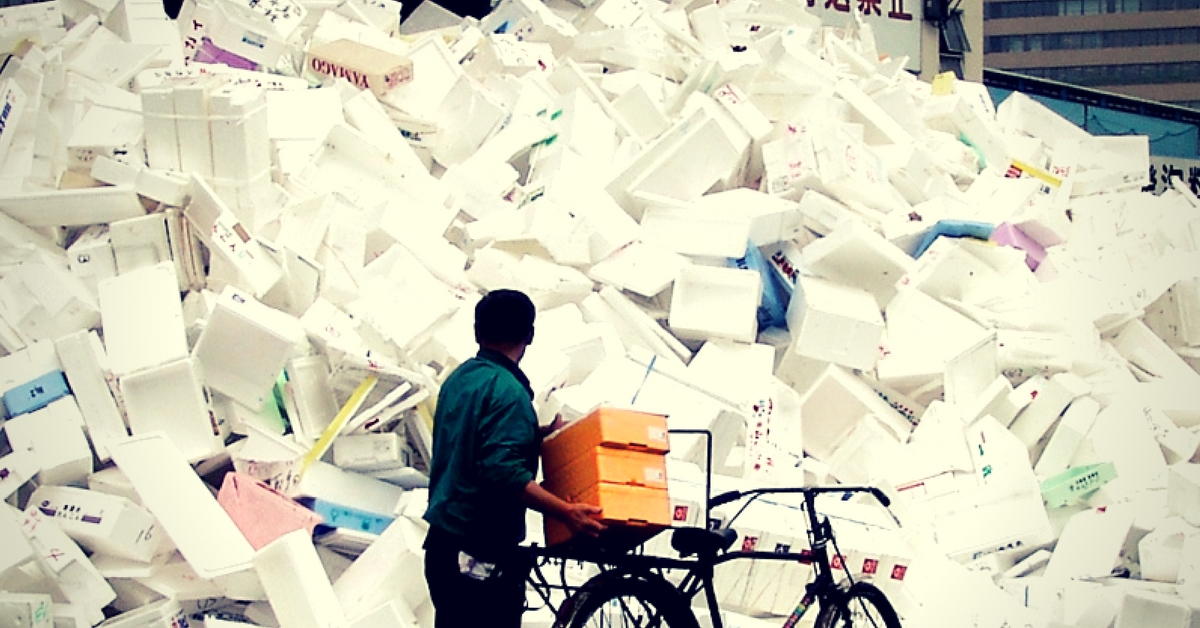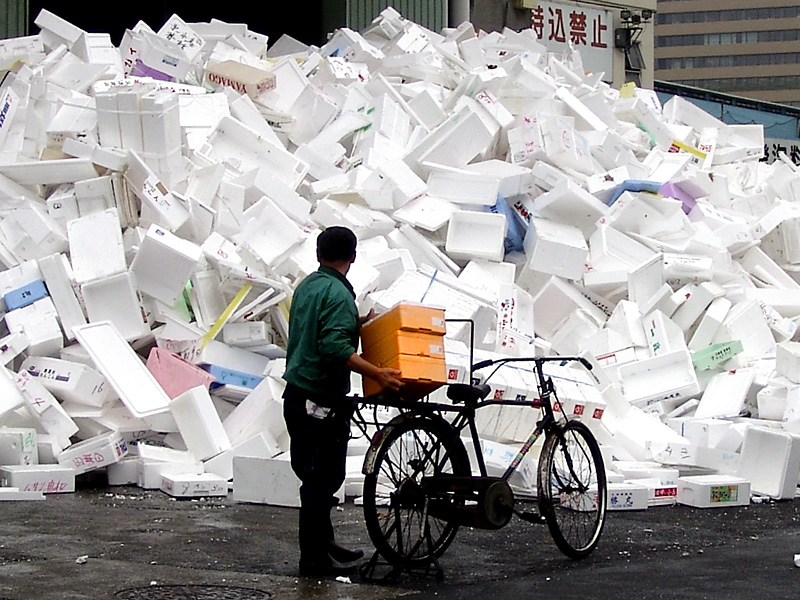A 12-Year-Old from Bhopal Shows Us How We Can Recycle Thermocol Using Nail-Polish Remover
Anakta Prabhu, a 12-year-old resident of Bhopal, has demonstrated an innovative way of curbing the thermocol menace by recycling it to make toys and other decorative items.

Thermocol, or polysterene foam, seems to be everywhere today – it is used for food packaging, as a cushioning material for transportation of goods, and so on. But very few of us understand the consequences of not recycling this form of plastic that is so ingrained in the fabric of our modern lives.
Keeping this in mind, Anakta Prabhu, a 12-year-old resident of Bhopal, has demonstrated an innovative way of curbing the thermocol menace by recycling it to make toys and other decorative items. And she is doing this by using a simple product – the nail polish remover.
Acetone in nail polish removers is a translucent, flammable solvent and it is extremely useful because it dissolves almost all organic compounds. Anakta demonstrated the effect of acetone on thermocol at an exhibition organised by the Sagar Public School in Bhopal.
She added thermocol blocks to acetone and they melted to form a white clay-like substance. After mixing with water, this substance takes a harmless form and can be used to make toys, soap dishes, cups, decorative items, etc.

Image for representation only. Flickr: Source
Anakta was prompted to exhibit this idea after her mother, who is a science teacher, asked her to recycle thermocol as a summer holiday project. Her endeavour inspired the school authorities to reduce the use of thermocol in school projects too.
“Commonly used thermocol, which is non-biodegradable, can be re-used in a non-harmful form with the help of nail polish remover. This will help us tackle the environmental challenges produced by casual dumping of thermocol,” she told The Times of India. On melting thermocol in acetone, it reduces by 20 times its size.
In a similar initiative, a group of school students in Pune had made adhesive out of used thermocol in the year 2014.
A report by The Alternative points to how thermocol mostly finds use in retail and packaging industries. Once the sheet of thermocol finds its way to our homes, we usually dump it in that space above the cupboard where old things collect dust, or throw it out with the rest of the trash. The sheet then makes its way to landfills where it remains for years because the material is completely non-biodegradable. Burning thermocol sheets results in carcinogenic fumes.
The process of recycling thermocol at home is easy. Here’s a demonstration you can watch and learn from:
Like this story? Or have something to share? Write to us: [email protected], or connect with us on Facebook and Twitter (@thebetterindia).
If you found our stories insightful, informative, or even just enjoyable, we invite you to consider making a voluntary payment to support the work we do at The Better India. Your contribution helps us continue producing quality content that educates, inspires, and drives positive change.
Choose one of the payment options below for your contribution-
By paying for the stories you value, you directly contribute to sustaining our efforts focused on making a difference in the world. Together, let’s ensure that impactful stories continue to be told and shared, enriching lives and communities alike.
Thank you for your support. Here are some frequently asked questions you might find helpful to know why you are contributing?


This story made me
-
97
-
121
-
89
-
167













